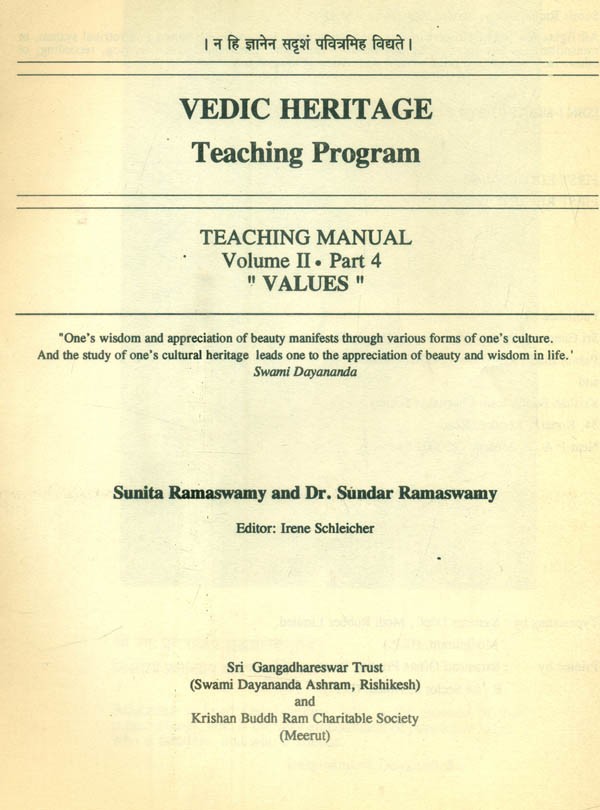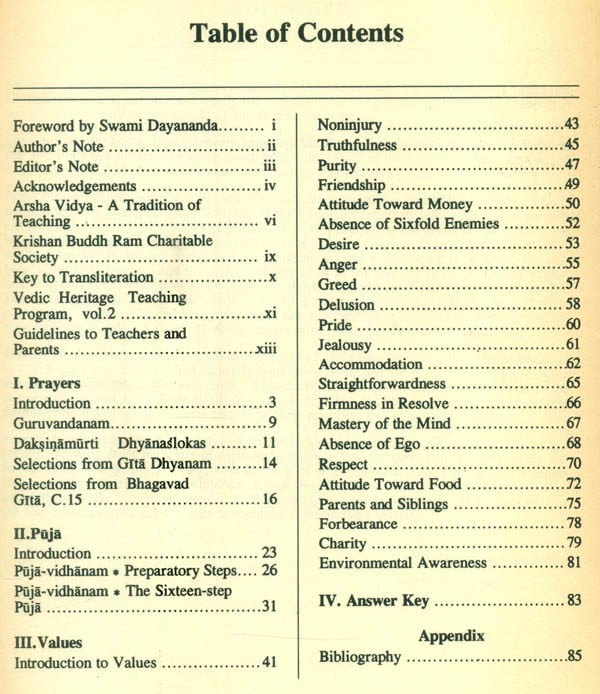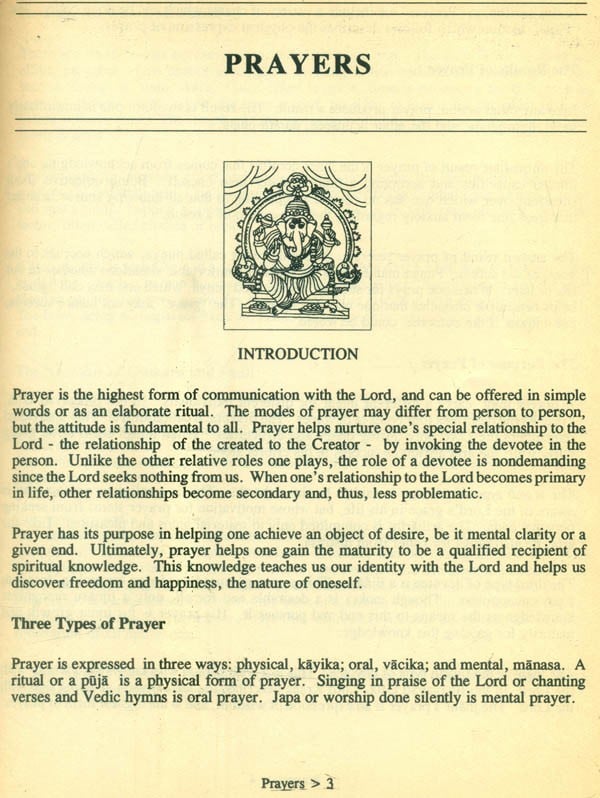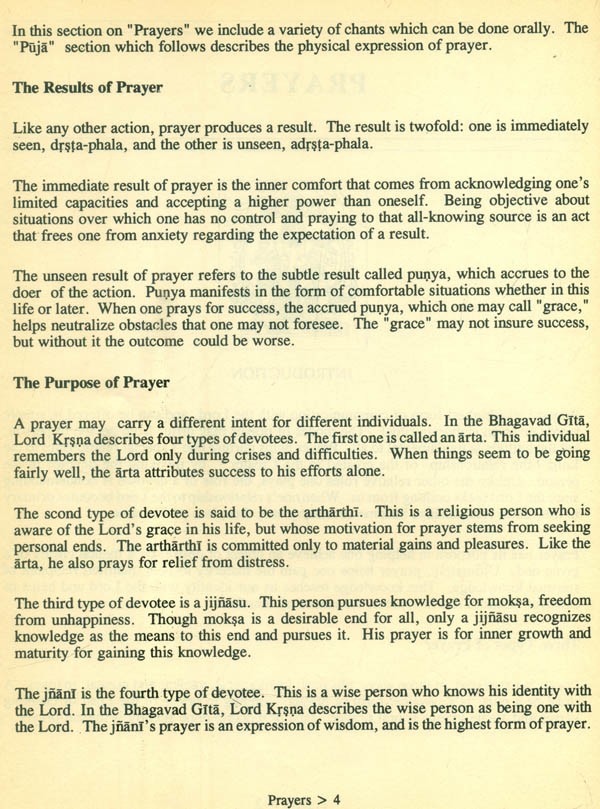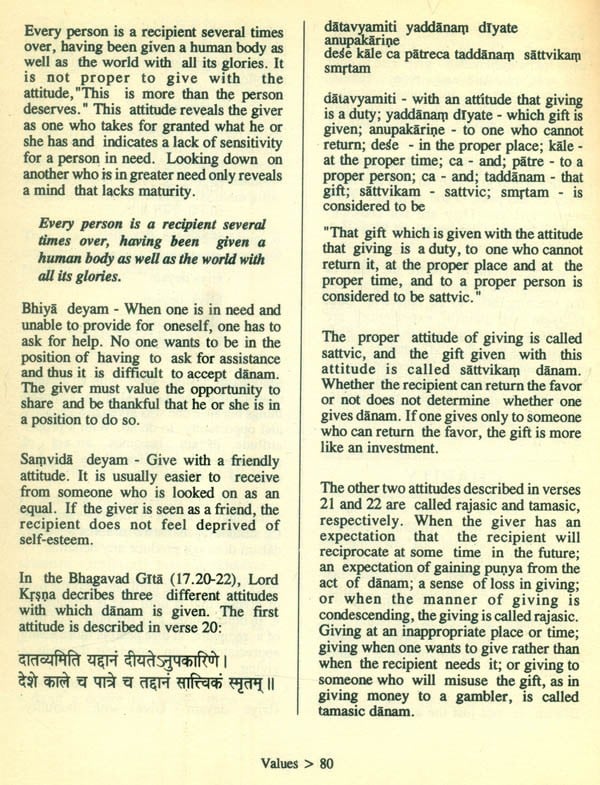
Vedic Heritage Teaching Program Teaching Manual- Volume-II: Part-4 Values (An Old and Rare Book)
Book Specification
| Item Code: | UBD227 |
| Author: | Sunita Ramaswamy and Sundar Ramaswamy |
| Publisher: | Sri Gangadhareswar Trust |
| Language: | English |
| Edition: | 1995 |
| Pages: | 106 |
| Cover: | PAPERBACK |
| Other Details | 11.00 X 9.00 inch |
| Weight | 340 gm |
Book Description
Language, dress, home, food, customs, manners and fine and performing arts are the elements that constitutes the culture of a given group of people. None of these needs to have anything to do with religion. Therefore, one can see a more or less secular culture in many countries.
In the Indian culture, however, all these elements are connected to the Vedic religion. This is so because in the Vedic vision of God, the world is non-separate from Him. All human pursuits are also connected to religion. The pursuit of wealth is seeking the grace of the Goddess of Wealth, Dhanalaksmi. Making a good home is the grace of Grhalaksmi; success is Jayalaksmi children are Santanalaksmi; marriage is Varalaksmi and one's well-being is Saubhagyalaksmi Even virtues like courage and strength are looked upon as the grace of God. Any knowledge is looked upon as the Goddess of Knowledge. In short, no pursuit or object of pursuit is secular, The human body itself is a temple. Bathing, dressing and ornamentation, alankara, are all a ritual of worship. Washing the dwelling place every day and decorating the entrance with rangoli are done to invite Goddess Laksmi. Greeting people with folded hands is an act of worship.
This religious culture, which touches every aspect of one's life, including the scheme of things in which one lives, was imbibed naturally from one's home and the cultural atmosphere of the immediate community. Not anymore. The parents are busy earning their livelihood in the competitive society and a joint family is a rare exception. So, the children have to be taught methodically the religious cultural forms and their meaning, in a class-room situation.
Keeping this in view, we have evolved a course in Vedic Heritage for children of different age groups. Drawing from ten years of experience teaching this heritage, Sunita Ramaswamy and Sundar Ramaswamy, my students, with the help of other students, have put together manuals for teachers and workbooks for children. I hope the educational institutions in India will make use of these books to conduct regular Vedic Heritage classes for children. Individual parents can also make use of these manuals to teach the children their heritage.
**Contents and Sample Pages**
